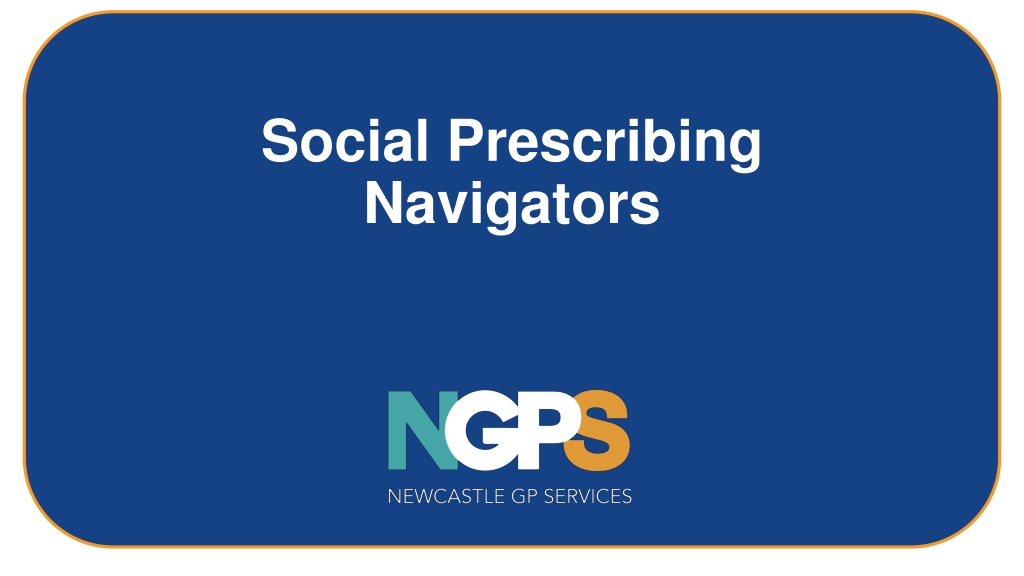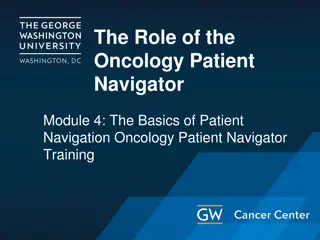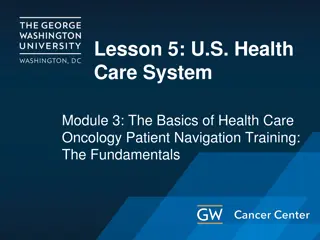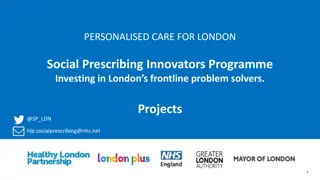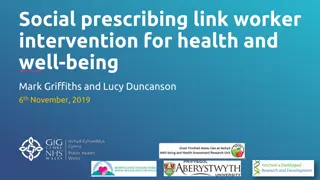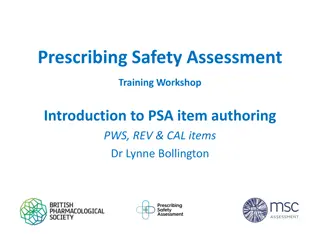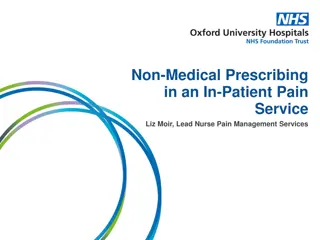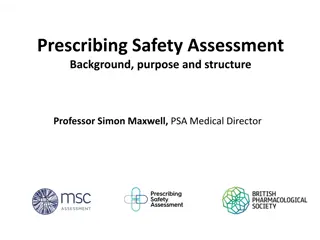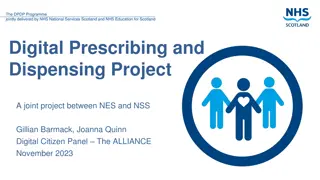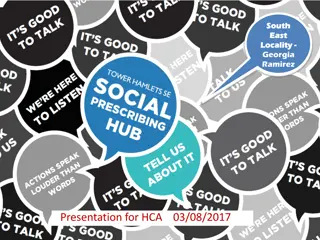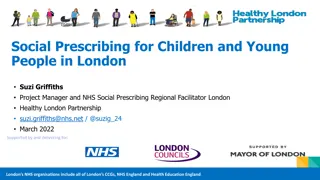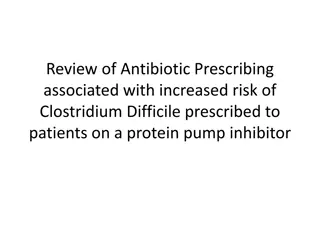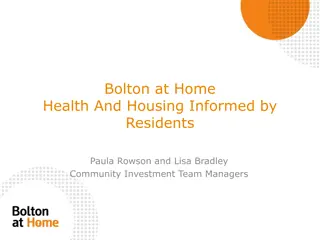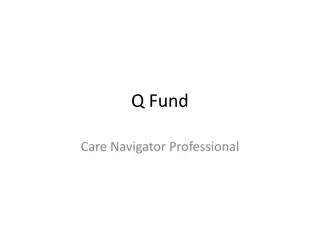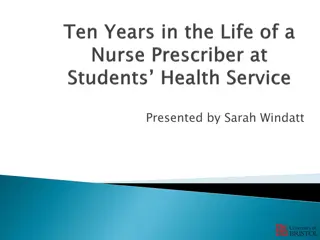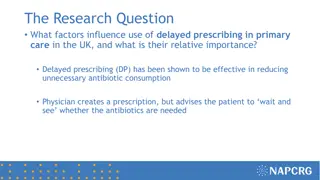Understanding Social Prescribing Navigators and Their Role in Health Care
Social prescribing navigators are a vital part of the healthcare system, connecting patients with community resources to improve their health and wellbeing. This approach, known as social prescribing, targets a wide range of needs, from mental health support to social isolation. By working closely with patients and their healthcare providers, social prescribing navigators empower individuals to take control of their health. Through non-medical referrals and collaboration with various sectors, these navigators play a key role in enhancing patient care and overall wellbeing.
Download Presentation

Please find below an Image/Link to download the presentation.
The content on the website is provided AS IS for your information and personal use only. It may not be sold, licensed, or shared on other websites without obtaining consent from the author. Download presentation by click this link. If you encounter any issues during the download, it is possible that the publisher has removed the file from their server.
E N D
Presentation Transcript
Social Prescribing Navigators
Contents 1. Who are Social Prescribing Navigators? 2. What is Social Prescribing? 3. What are the benefits to Social Prescribing? 4. What are the impacts of Social Prescribing? 5. How to refer 6. What happens next? 7. Activity session 8. Case studies 9. Feedback 2
Who are Social Prescribing Navigators? 3
NGPS employ a team ofpractice-based social prescribing navigatorswho work in all general practices across the city. The service gives GPs and practice staff a non-medical referral option that can work alongside existing treatments to improve health and wellbeing. Our social prescribing navigators help and support patients by signposting them to sources of support in the community. This may include, for example, help with financial, housing, lifestyle, mobility, social and general advice. We work with more than 100 health, social care, and voluntary sector partnersto provide this service. 4
Social prescribing is designed to support people with a wide range of social, emotional or practical needs and many schemes are focussed on improving mental health and physical well-being. Those who could benefit from social prescribing schemes include people with mild or long-term mental health problems, vulnerable groups, people who are socially isolated, and those who frequently attend either primary or secondary health care. Kings Fund 02.02.17 6
Social prescribing is part of a person-centred approach recognising the individual patient or service user as the expert in their own experience, and supporting and empowering them to take greater control of their own health and wellbeing. It is an approach that can be applied in many ways in different settings. At its core, it has three parts a referrer, a navigator / link-worker who works with the individual to identify their needs and opportunities for support from the community, and an activity. 7
A short video to highlight the benefits of Social Prescribing 8
Why does social prescribing work? * Spend more time with patients to understand their needs and issues * Listen, be empathic, supportive and empower patients to take control of their health and improve their situation and to prevent further crisis situations * Resourceful and creative about care and support options available locally * Access to up to date Information and advice * Provide a link between NHS services and the voluntary sector * Work with carers and families * Alleviate pressure from the GP's by dealing with non medical issues related to health needs. 9
Long term impacts of social prescribing: * Provide more holistic options to patients other than medication * Helps to build sustainable communities where patients are given the opportunity to be included, involved and empowered to make a difference. 10
How to refer Anyone working within the GP Practice can refer using the referral form which can be found of EMIS or System One. Those staff who do not refer to our service there is no expectation to include this into your existing role but if you would like to refer into our service please speak with you team supervisor or practice manager to ensure it is appropriate for you to do so. The person must be 18+ and need support with one or more of the following criteria - Finance and Benefits - Exercise and Mobility - Wellbeing and Lifestyle - Loneliness and Isolation - Housing and Welfare advice - General Information The service offers signposting and navigation support. 11
What happens next? A Social Prescribing Navigator will contact the patient by phone to discuss the details of the referral and if appropriate arrange a suitable date and time to meet the patient at their own GP practice. The SPN will discuss with the patient s their concerns, needs, and identify the best options of which service is best placed to meet the needs of the patient, from a diverse range of Community ,Voluntary Sector, Statutory services the SPN has established links with. A follow up phone call or appointment will be arranged if/when appropriate to understand if the person is happy with the outcome and to understand if they are now accessing the correct advice and support or if further SPN input in required. SPNs have been trained in the use of EMIS and System One, where they are able to document their intervention which is then uploaded into the patient record for future reference. 12
Connected Supported Creative Active Learning Getting out of the house, meeting people and building relationships through group or one- to-one activities, e.g. faith groups, community groups, peer-support, knitting groups, sports or hobby clubs, volunteering, repair cafes. Building on interests, using existing skills or learning new ones, e.g. through art, dance, singing, food growing, gardening and engaging with nature (green care). Accessing advice and support, e.g. for housing issues, debt, domestic abuse, falls prevention, welfare benefits or employment issues. Being physically active, by keeping moving or getting fit, e.g. exercise classes, walking groups, dance, gardening, volunteering and employment support. Lifelong learning, developing new skills and confidence, e.g. adult education and lifelong learning courses, volunteering and employment support. 13
Case Studies 14
Case Study 1 MAKING A DIFFERENCE TO JOHN* AND HIS FAMILY John s GP practice referred him to the social prescribing service, which recognised that he needed help. John s biggest issue was his alcohol dependency; he had been dependant for over 10 years. He lives in poverty, was not claiming benefits and relied on family handouts to buy alcohol. Our navigator met with John regularly for almost a year, providing support to address his alcoholism. After a few ups and downs relating to treatment, he finally managed to complete a residential detox and has been sober for several weeks. He was supported to apply for and successfully claim for welfare and benefits. He s waiting to start Talking Therapies to help address the root causes of his addiction, which is related to family trauma, marital separation and not being allowed to see his children. He is being supported to apply for rehousing. This will help reduce the risk of relapse as his flat is above an off-licence and in a community where drugs and alcohol are very problematic social issues. He is also being supported by Citizens Advice to clear his debts. John and his sister have said the level of support he has had from the navigator and his GP team, who have worked collaboratively, is outstanding. He firmly believes without the support he would have drunk himself to death. He and his family cannot thank the navigator enough for all they have done. He is actively looking for work, keeping fit and getting interested in hobbies and meeting people again, after living many years in isolation with cider as his only companion. * Not real names 15
Case Study 2 ANDREW* FEELS MORE OPTIMISTIC ABOUT THE FUTURE Andrew has been through a very traumatic situation. He lost his family, job, and quality of life in a very short space of time. He was very isolated with only one close friend for support. After talking about how he fills his time and the sorts of things he was interested in Andrew said he would like to get fit, improve his confidence and self-esteem our navigator made several different referrals. This included Live Well, for support to go to the gym; Moving Forward to help with his confidence and Connecting Communities to give Andrew some regular one-to-one support and company with getting out of the house. Andrew has been going to the gym regularly which has improved his wellbeing and general health. He has engaged with Moving Forward and has been along to their drop-in sessions which he found very helpful. He has also had some contact with Connecting Communities and is waiting for a support worker to be allocated to him. Andrew said; I feel like I have moved in a positive direction, I m much more optimistic about the future. * Not real names 16
Case Study 3 Bill NO LONGER FEELS ALONE. Bill was referred to the Social Prescribing Navigator by his GP. Bill told that he was feeling isolated and increasingly worrying about being alone with no support from family or friends. Bill also told his GP that he was feeling very anxious about where he was living and whether it was safe and secure. Our Social Prescribing Navigator arranged to meet Bill in his GP practice. The SPN quickly built up a rapport with Bill, gained his confidence and in doing so Bill disclosed he had experienced a traumatic incident in a previous home which had knocked Bills confidence. The SPN contacted the housing provider Your Homes Newcastle who informed they were aware of Bills worries and offered assurance that Bills accommodation was safe. The housing scheme has a very safe history with a rigid door security policy in place and puts the welfare and safety of its residents first and foremost. Once this information was shared with Bill, he felt reassured and less worried than he had been. The SPN also discussed a few things that might help reduce Bills risk of becoming socially isolated and improve his wellbeing by having some social interaction with others and getting out of the home a bit more. The SPN told Bill about a service offered by the British Red Cross connecting communities scheme. Which bill said sounded very interesting and he would like to be referred to the service for community support. Connecting communities have been providing regular support to Bill helping him to get out and out and about in his local community as well as engaging with community activities and meeting other people of a similar age. Bill said he was very happy with the support he has received from the Social Prescribing Navigator and also the help given referring him to the connecting communities service. He feels much more confident and less anxious about everything and is enjoying everyday activities again and remains very happy and safe in his home. *Not real names 17
The National Picture of Social Prescribing. The word is out You don t have to be alone I was totally blind before I met with the social prescribing worker. I had no idea about what was going on in my community and what social activities are here. But after meeting him, I would recommend social prescribing to everyone. Google can give you the address of a community centre or service, but it can t give you the idea of what is going on inside the centre and what things you can join. So, then I understand what I can join and what organisations I can volunteer with. I don t have to be alone, I don t have to stay at home, I get help from everyone and now I m giving back help to others. Healthy dialogs -Merton SP Service 18
